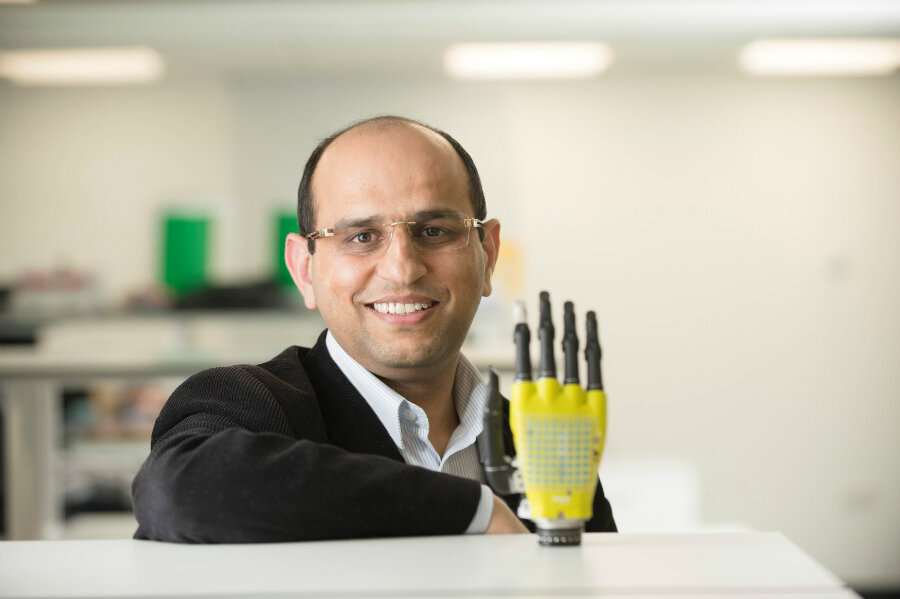'Solar-powered skin' could restore feeling to amputees
Loading...
A new development promises a future with more advanced artificial limbs for people and robots alike.
A team of engineers led by University of Glasgow engineer Ravinder Dahiya has improved upon previous designs for synthetic skin, capable of a sense of touch, by taking advantage of the characteristics of graphene. The upgraded skin incorporates solar cells to power itself, and the installation of onboard batters could someday lead to the development of completely self-sufficient prosthetics.
Graphene, a so-called wonder material whose isolation won the 2010 Nobel Prize in physics, makes the magic happen. A more exotic form of the humble pencil filling, graphite, graphene exhibits super strength despite measuring just one atom thick. It’s also a fantastic conductor of electricity, and is nearly completely transparent to visible light, two features that make it well-suited to collecting solar power.
Using graphene, Dahiya’s team has succeeded in building solar cells into the skin of a prosthetic limb for the first time, and they’re more than able to cover the minuscule 20 nanowatts per square centimeter required to power the skin, according to a press release.
Skin, if viewed as a sensor, is a very complicated one, constantly sending information about temperature as well as pressure and texture from all over the body, Dahiya explains.
Recreating those functions in an artificial arm or leg isn’t easy, but Dahiya thinks his team is well on their way.
“My colleagues and I have already made significant steps in creating prosthetic prototypes which integrate synthetic skin and are capable of making very sensitive pressure measurements. Those measurements mean the prosthetic hand is capable of performing challenging tasks like properly gripping soft materials, which other prosthetics can struggle with.”
And now thanks to graphene, that skin doesn’t need batteries, or routine charging.
Robots could benefit from smarter limbs, too.
“Skin capable of touch sensitivity also opens the possibility of creating robots capable of making better decisions about human safety,” Dahiya says in the press release. “A robot working on a construction line, for example, is much less likely to accidentally injure a human if it can feel that a person has unexpectedly entered their area of movement and stop before an injury can occur.”
Even though the prosthetic skin doesn’t need batteries, future models might use them to store the overflow-power generated by the solar cells."This could allow the creation of an entirely energy-autonomous prosthetic limb," Dahiya said.
This advancement is the latest in a field that some say is making “exponential” progress. For 20-year-olds being fitted for artificial limbs now, says director of Massachusetts Institute of Techonology’s Biomechatronics group Hugh Herr, "by the time they are 40, the bionic legs we have in society will be extraordinary and will make today's limbs look prehistoric." Dr. Herr is also a double amputee and an avid mountain climber.
And as the technology gets more advanced, prices come down, too. Now, a number of groups help amputees use 3-D printers to create prosthetics for as little as $50, affordable enough to let parents buy multiple sizes for growing children, just like pairs of shoes.
Dahiya’s group supports work in this area as well, he explains.
“We are also using innovative 3-D printing strategies to build more affordable sensitive prosthetic limbs, including the formation of a very active student club called ‘Helping Hands.’”








